by Lisa Cooke | Aug 2, 2017 | 01 What's New, German, Maps |
Track down your German ancestors with Germany genealogy expert Jim Beidler. He’s here to share great tips for using MeyersGaz.org, the recent online collection of crucial historical German maps.
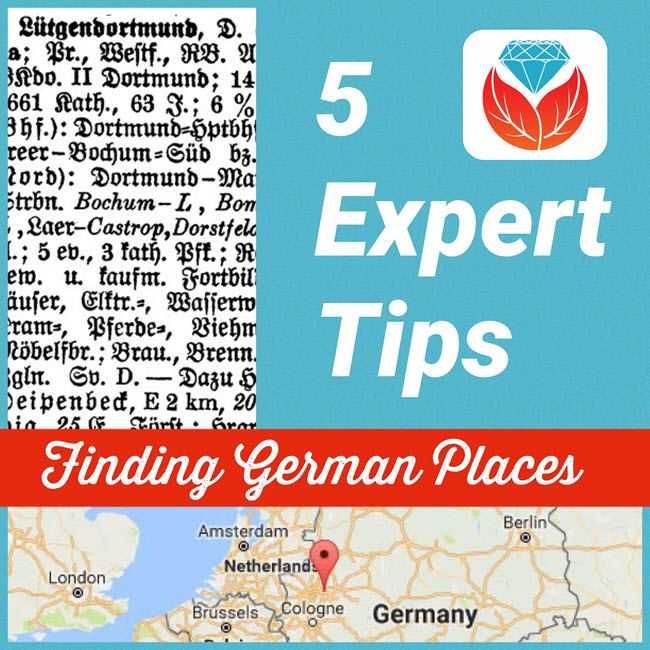
 The Meyers Gazetteer is a comprehensive, indexed map to every place name in the Second German Empire (1871-1918). It’s based on the 1912 book commonly known as “Meyers Orts” or the Meyers Gazetteer: Meyers Orts- und Verkehrs-Lexikon des Deutschen Reichs. Recently, a free version of the Meyers Gazetteer became available online at www.MeyersGaz.org.
The Meyers Gazetteer is a comprehensive, indexed map to every place name in the Second German Empire (1871-1918). It’s based on the 1912 book commonly known as “Meyers Orts” or the Meyers Gazetteer: Meyers Orts- und Verkehrs-Lexikon des Deutschen Reichs. Recently, a free version of the Meyers Gazetteer became available online at www.MeyersGaz.org.
5 Tips for Using the Meyers Gazetteer
German research expert Jim Beidler, author of Trace Your German Roots Online, recently offered Genealogy Gems followers five tips for using the site to trace your German roots:
1. Correctly locating the village of origin is often the key to finding Germany’s many locally-based records. The FamilySearch catalog, shown here, places German villages in the same political jurisdictions as Meyers-Ort (Second Empire), which can be incredibly helpful when looking for microfilmed church and other records. (Click here to learn more using the FamilySearch catalog and the end of their microfilm lending program.)
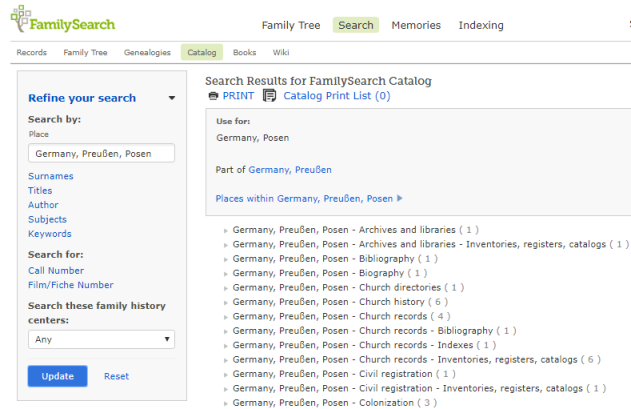
2. When searching the Meyers Gazetteer online, don’t use diacritical marks such as the umlaut (the two dots) or expand umlauted vowels (such as by turning an ä into an ae).
3. Filter search results to a specific German region to narrow results.
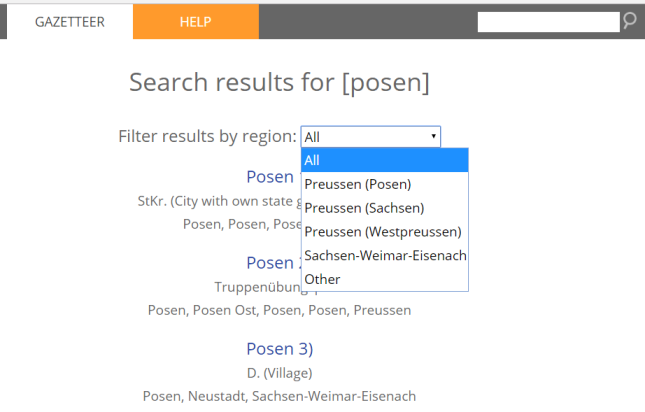
4. Explore places with an interactive map that allows you to zoom in and out and toggle back and forth between the past and present. After clicking on a search result, click Map. An interactive map will appear. Roll over Toggle Historical Map to see options to resize and to select whether the map shows you local jurisdictions, surrounding German civil registration offices (StdAs), and Catholic, Protestant and Jewish places of worship.
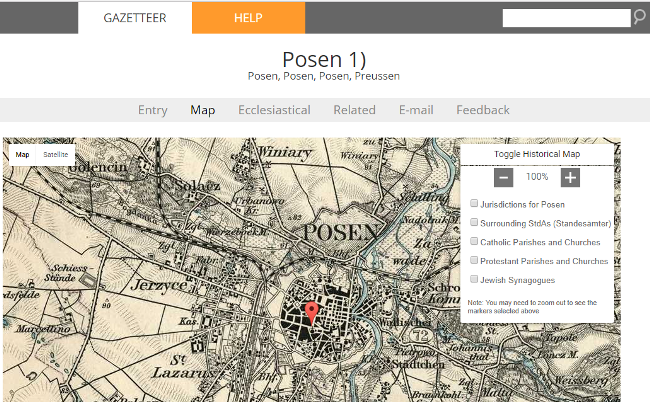
5. Click on Ecclesiastical to learn more about church parishes within 20 miles, which may have kept records on your family.
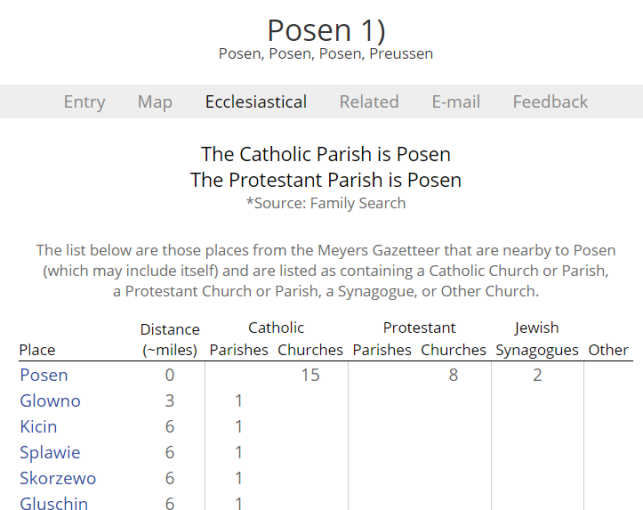
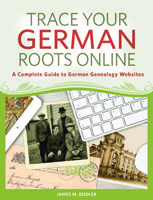
More from Jim Beidler on the Meyers Gazetteer
Genealogy Gems Premium members can sign in to our website and hear Jim go more in-depth on the Meyers Gazetteer for German genealogy research in Genealogy Gems Premium Podcast episode 143. Jim applies his decades of German research experience to the latest technological advances and brings you along for the ride!
Jim Beidler is the author of Trace Your German Roots Online, one of Family Tree Books’ top-selling genealogy guides.
by Lisa Cooke | Sep 10, 2015 | 01 What's New, Ancestry, British, FamilySearch, Findmypast, images, Immigration, Records & databases, Travel, United States
 Have you ever thought to use passport applications for genealogy–to search for your immigrant or traveling ancestors?
Have you ever thought to use passport applications for genealogy–to search for your immigrant or traveling ancestors?
Passports were issued in the U.S. beginning in the late 1700s, but weren’t required except during times of war until 1941. These records can be an excellent place to learn an immigrant’s date of arrival, the arrival ship and date of naturalization (if naturalized).
Two Quick Tips for Researching U.S. Passports for Genealogy
- Passports expired every few years, so people reapplied. You may find multiple applications for those who traveled abroad more than once. Subsequent applications will refer back to a prior one.
- In earlier years, look for married women and minor children in group passports issued under the name of the head of household.
Where to Find Passport Applications

Resources
A Page of History: Passport Applications by Phil Golfarb
Genealogy Gems Premium Podcast Episode 124 interview with author Phil Goldfarb on the history of passport applications and celebrity passport stories. Available to Genealogy Gems Premium members.
Family History Made Easy podcast for free, step-by-step beginner and back-to-basics genealogy education
 Thanks for sharing this post with your genealogy buddies and on your local society social media channels.
Thanks for sharing this post with your genealogy buddies and on your local society social media channels.
by Lisa Cooke | Feb 6, 2017 | 01 What's New, DNA |
Sometimes history provides us with a situation that is just too outlandish to be false, like this one on mDNA testing for genealogy by using ancient ponytails! In these lucky, true-to-life conditions, clues to help us unravel genealogical mysteries and tell our own crazy stories might just be found.
![By GrammarFascist (Own work) [CC BY-SA 4.0 (http://creativecommons.org/licenses/by-sa/4.0)], via Wikimedia Commons mDNA testing on ancient ponytails](https://lisalouisecooke.com/wp-content/uploads/2017/01/Dreadlocks_attribution-needed.jpg)
English Mutineers Create Endogamous Population
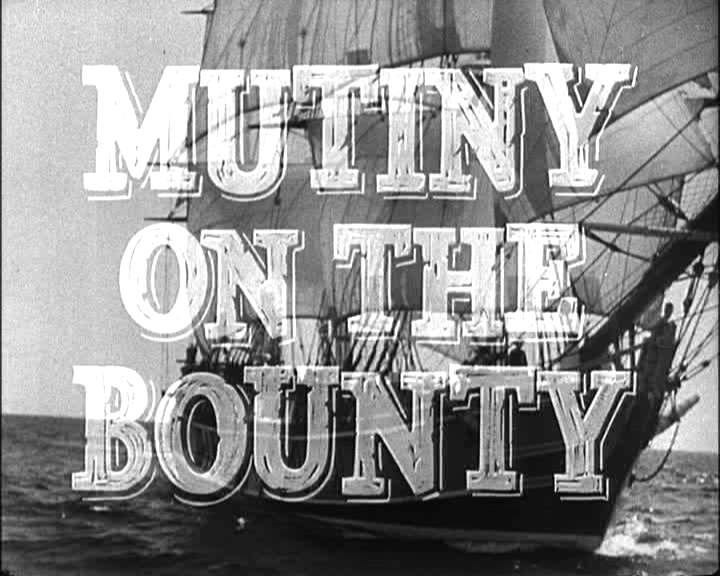
By Trailer screenshot (Mutiny on the Bounty trailer) [Public domain], via Wikimedia Commons
And when I say tiny, I mean tiny. 1.75 square miles tiny.
But considering that 9 English mutineers, their Tahitian brides, and a couple Tahitian men were the founding population for this island, it provides an amazing genetic and genealogical view into endogamous populations.
The Proof is in the Pigtails
This fascinating tale is about to get richer, as ten pigtails of hair claiming to be from some of the original mutineers and their wives, have recently been acquired by the Pacific Union College’s (PUC) Pitcairn Islands Study Center in California. The King’s College London has contracted them to perform DNA testing.
Pay close attention to this next part: Researchers are going to conduct DNA testing on the hair samples. But this does not mean you are going to be able to test the locks of hair stowed away from one of your ancestors!
Why, you ask?
First barrier: Cost. This process of trying to extract DNA from a hair sample, especially a very, very old hair sample is meticulous work. It will cost the average consumer a pretty penny. And, you may not be able to find a DNA testing company who wants to do it for you. All major genetic genealogy companies will just flat out tell you “no.” Most paternity testing companies will require your hair has the root attached. In fact, in my quick search, I can’t even find one DNA testing company that will attempt to get DNA from your lock of hair.
Second barrier: Results. Even if you could get a lab to extract the DNA for you, the only available DNA type retrieved from a cut piece of hair is mitochondrial DNA (mtDNA). The mtDNA will trace a direct maternal line. This is opposed to the YDNA that traces a direct paternal line and the autosomal DNA which traces both sides of your family tree. Even if they do get mtDNA from your sample, it is likely to be damaged and incomplete. Therefore, the best you will likely get is an assessment of your deep ancestral origins.
For you, that might not be quite enough to determine and document your family history. But for those interested in verifying this story of mutineers settling in the Pitcairn islands, it might be.
Will it Work?
If they do get mtDNA from the 10 pigtails, they will get 10 mtDNA lineages represented. Those stemming from the mutineers should have their deep origins in Europe, while their Tahitian brides will have a very different mtDNA signature. Likewise, if an mtDNA signature can be obtained, then the mtDNA of those still living in Pitcairn and nearby Norfolk (where many went in 1857) should match these pigtails. If it does, they can measure how many of the current residents are directly maternally related. Of course, in order to truly verify the claims, some serious genealogy work must be completed.
I will be watching this story closely over the next few months as research progresses. If successful, this will be another victory for the rarely celebrated mtDNA. This study shows that if your goals are understanding deep heritage, or testing out a particular hypothesis on your maternal line, mtDNA can be a useful option.
While the DNA studies you read about in the paper won’t always be something you can learn from, others are. Take for example the stories I shared several months ago on the Genealogy Gems podcast and blog about DNA confirming the love affair of President Warren G. Harding and the story of how experts proved it was King Richard III buried under that parking lot. You can definitely learn about using DNA for genealogy from these very public examples!
More on mDNA Testing for Genealogy
When to Do an mDNA Test for Genealogy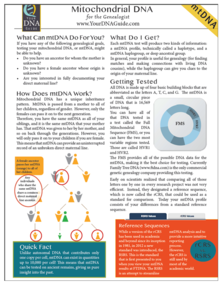
mDNA Quick Guide for Genealogists by Diahan Southard
by Lisa Cooke | Oct 22, 2015 | 01 What's New, Evernote, FamilySearch, Listeners & Readers, Source Citation
Here’s how can you add family history documents you’ve grabbed with the Evernote web clipper to your tree on FamilySearch!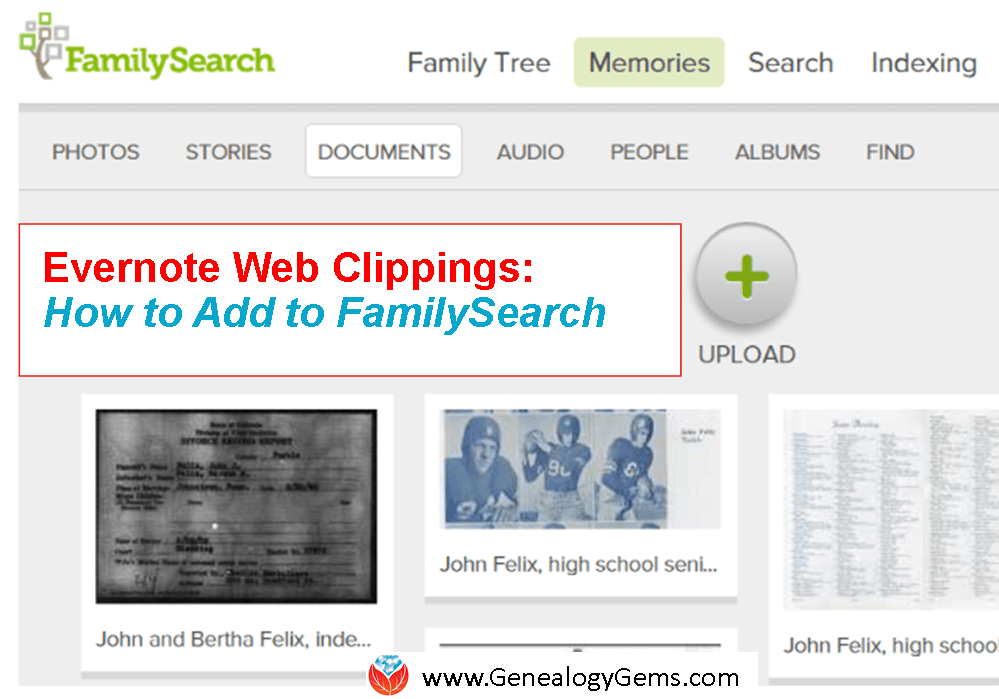
Recently Zooey wrote in with this question: “I’ve clipped numerous things for my ancestors [with the Evernote web clipper] that I want to put in FamilySearch. How do I do it under Documents?”
Good for Zooey for having her genealogy sources organized in Evernote–and for wanting to cite her sources on her FamilySearch family tree. Here’s how to do it:
FamilySearch Documents support the following file types: .pdf, .jpg, .tif, .bmp, and .png. Since it doesn’t currently have an “import from Evernote” feature, you’ll need to export the web clippings from Evernote and then upload them to FamilySearch.
Earlier this year I wrote an article on our blog entitled “Here’s a Cool Way to Export a Web Clipping from Evernote.” The article will walk you through exporting your Evernote web clippings as pdf files, which FamilySearch Documents can then accept as uploads.
More Evernote for Genealogy Tips on the Genealogy Gems Website:
You can find all our past articles on using Evernote for genealogy (including the one I mentioned) at the home page of our website. On the left, just under the main red menu, you will see a drop down menu called “Select Content by Topic.” Click the down arrow and select “Evernote” from the list. This will display all our past Evernote articles on your screen starting with the most recent. Or get started with these great how-tos:
How to Use Evernote for Genealogy: The Ultimate Education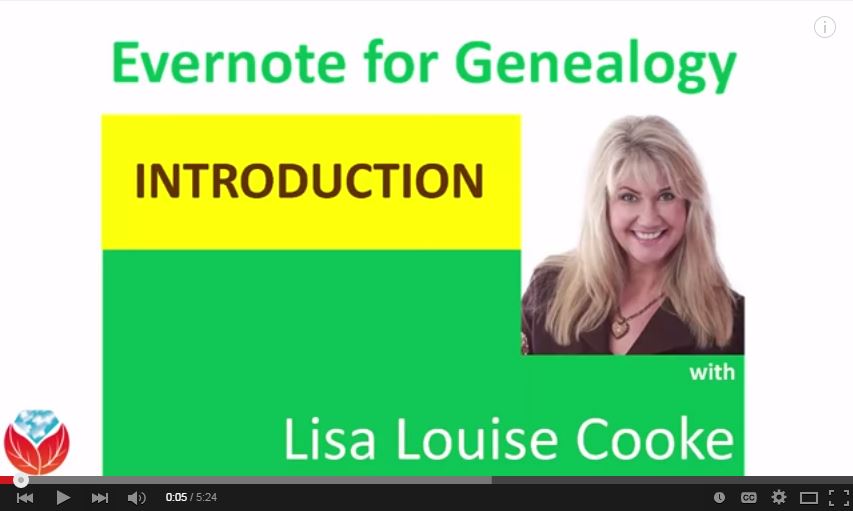
Evernote for Genealogy: What It Is, and Why You Would Use It (FREE VIDEO!)
How to Use Evernote for Genealogy and Family History: Handwriting, OCR, Video and Upload Answers (FREE VIDEO!)
 Thank you for sharing this post with others. We would all love our online trees to be better sourced–and for others’ trees to be better sourced, too.
Thank you for sharing this post with others. We would all love our online trees to be better sourced–and for others’ trees to be better sourced, too.
by Lisa Cooke | Oct 18, 2015 | 01 What's New, Conferences
The Texas State Genealogical Society 2015 Family History conference kicks off in less than 2 weeks. I’ll be there! Can you come? Here’s a discount code just for Gems  fans!
fans!
My home state of Texas does EVERYTHING in a big way. So it’s no surprise the upcoming Texas genealogy conference will pack so much into their 2-day event, October 31 – November 1. Here’s a run-down of the weekend AND my friends-and-family discount code that you can use to save on registration.
2 KEYNOTE SPEAKERS. I’m looking forward to sharing the keynote stage with J. Mark Lowe, an expert genealogist and a very skilled and fun teacher. I think we’ll all have a lot of fun during these presentations.
GET-IT-DONE WORKSHOPS. Come and learn super practical skills to move your family history research ahead! I’m teaching “Learn How to Time Travel with Google Earth” and “How to Use Evernote for Genealogy” (Levels 1 and 2). Mark will teach a workshop on Genealogical Research in the South and another called “Following a Case through Court.”
43 CLASSES IN 14 TRACKS. Beginners are welcome–and intermediate/advanced researchers will have plenty to chew on–during 2 days of breakout sessions with topics that include: Genealogy for Beginners, DNA, African-American Research, Courthouse Records & Records Loss, Adoption, Hispanic Research, Methodology, Libraries & Repositories, Historical Context, Societies & Communities, and Digital Genealogy.
Early-bird registration has officially ended, but I have coupon code that passes on my friends-and-family discount to YOU. Use coupon code family20 to get $20 off the $150 fee for the full 3-day registration or coupon code family10 to get $10 off any single-day registrations. Click here to register now.
P.S. You can share this code with YOUR friends and family! Please do, in fact! Thank you!
Click below to read more about attending genealogy conferences:
The Benefits of Attending Genealogy Conferences: Podcast interview with Dick Eastman. Listen for free!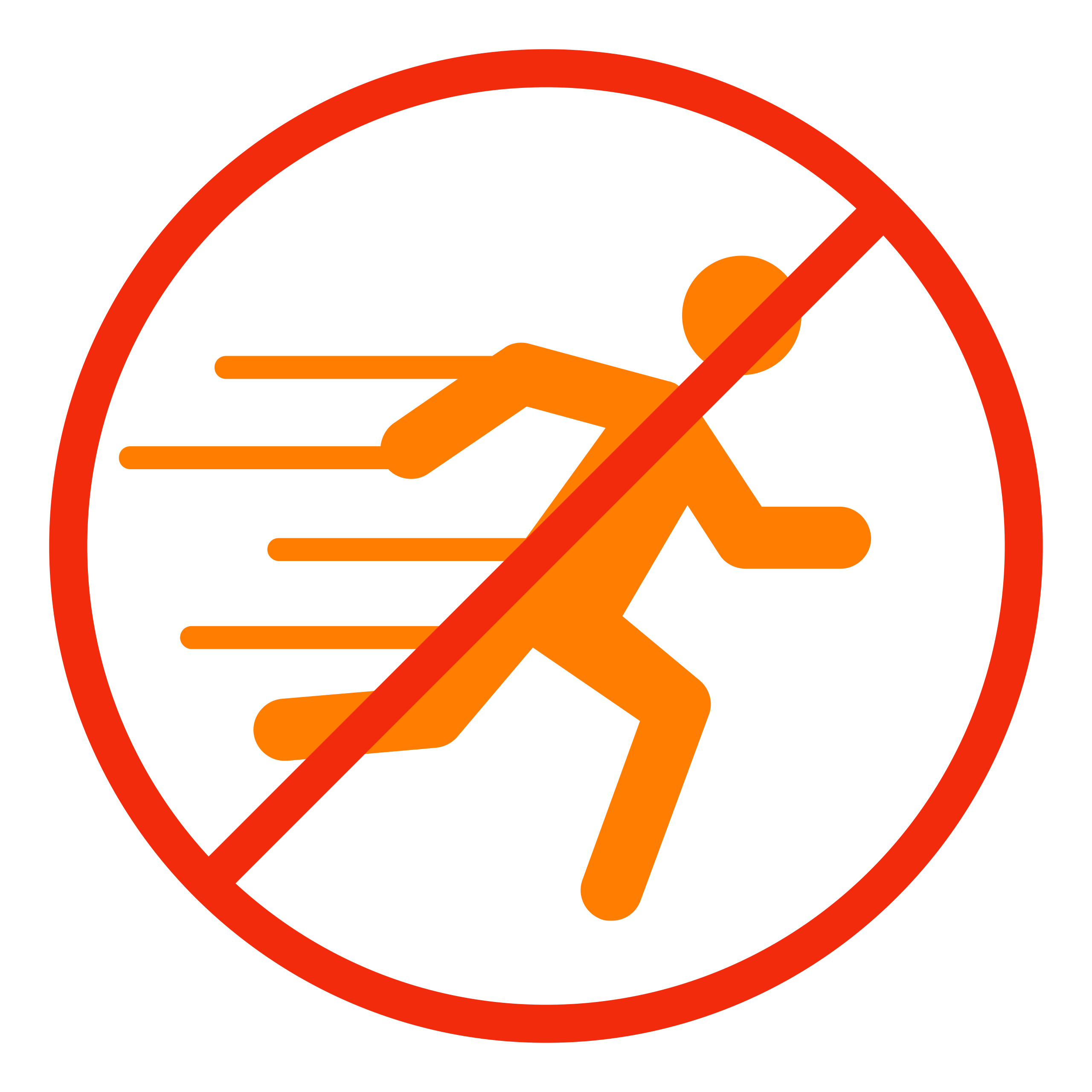
Where Should You Sit at a Genealogy Conference?

 The Meyers Gazetteer is a comprehensive, indexed map to every place name in the Second German Empire (1871-1918). It’s based on the 1912 book commonly known as “Meyers Orts” or the Meyers Gazetteer: Meyers Orts- und Verkehrs-Lexikon des Deutschen Reichs. Recently, a free version of the Meyers Gazetteer became available online at www.MeyersGaz.org.
The Meyers Gazetteer is a comprehensive, indexed map to every place name in the Second German Empire (1871-1918). It’s based on the 1912 book commonly known as “Meyers Orts” or the Meyers Gazetteer: Meyers Orts- und Verkehrs-Lexikon des Deutschen Reichs. Recently, a free version of the Meyers Gazetteer became available online at www.MeyersGaz.org.








![By GrammarFascist (Own work) [CC BY-SA 4.0 (http://creativecommons.org/licenses/by-sa/4.0)], via Wikimedia Commons mDNA testing on ancient ponytails](https://lisalouisecooke.com/wp-content/uploads/2017/01/Dreadlocks_attribution-needed.jpg)




 Thank you for sharing this post with others. We would all love our online trees to be better sourced–and for others’ trees to be better sourced, too.
Thank you for sharing this post with others. We would all love our online trees to be better sourced–and for others’ trees to be better sourced, too. fans!
fans!